The Article
Micro iPhono 2 Phono Amplifier From iFi
27th June 2018
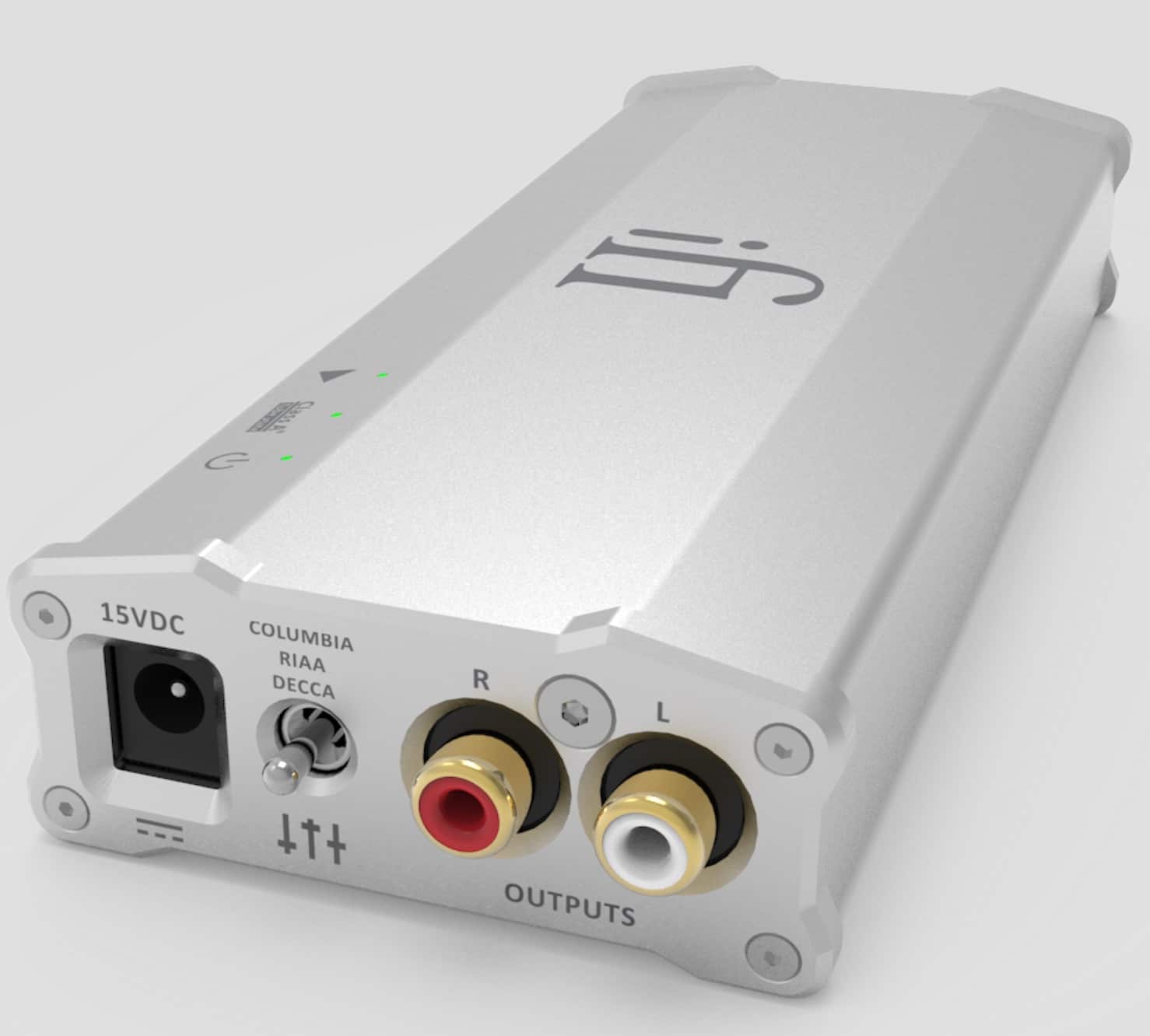
Looking for a value for money phono amplifier with a small footprint? Paul Rigby might just have the thing for you as he reviews the IFI Micro iPhon0 2
You’ve progressed from the budget turntable that features a built-in phono amplifier. You then realised that the best sound quality was to be had by using an external model. Hence, from there, you grabbed a £100 external phono amplifier and was very happy with the resultant sonics for a time but then you began to wonder. Is there more? More fine detail? More clarity? More transparency? Is an upgrade required?
Most probably, yes. But to where? And by how much? If you’ve been happy with your budget phono amplifier then I would venture that you should look towards the £500 (give or take) mark as the next step up to provide a satisfying jump in sound quality, to provide value for money and to allow you time to enjoy your music before any additional upgrades (although many uses will stop right there and never progress any further).
So what model to try? There’s a few in the market. Here’s the latest.
The iFi Micro iPhono 2 is itself an upgrade from the original iPhono, now offering a 72db gain with a quoted change of dynamic range from the original’s 90db to the new model’s 106db.
The diminutive, 265g iPhono 2, uses a the Class A ‘TubeState’ including a Burr-Brown Soundplus J-FET type amplifier at the heart of the new Class A, J-FET/BJT output buffer to reduce the loading that, according to the company improves, “…inherent linearity while allowing it to drive even punishing 600 Ohm studio inputs.”
The power supply filtering has been increased by five times while the noise floor has reportedly been lowered, helped by the Direct-Drive Servoless ‘DC Infinity’ circuit, that has no included capacitor or DC-Servo. Capacitors are used elsewhere, of course. These are Japanese TDK C0G types complimented by Panasonic ECPU Film capacitors and lots of Vishay MELF type thin film resistors.
An array of EQs has been added as DIP switches and a chassis-mounted switch, disguised as rather official looking choices. They include RIAA, Neumann’s eRIAA, Columbia, Decca and IEC (Enhanced RIAA EQ curve plus subsonic filter). There’s also a +12db DIP switch, useful if required.
On the same faceplate of the Micro iPhone 2 is the power socket for the external power supply plus outputs. On the faceplate opposite the long chassis are inputs for moving magnet and moving coil.
Installing sockets and switches at opposite ends of the long chassis helps to retain the slimline nature of the chassis but this effect is ruined when the cables are simultaneously poking out of each end, the Phono 2 looks a little cumbersome when fully connected and siting the chassis became a tad difficult.
To connect a ground wire from the turntable to the iPhono 2 you can use the included small extension lead, if required. A set of DIP switches can be found underneath the chassis to set the output and gain.
SOUND QUALITY
I began the sound tests with vocal jazz and Peggy Lee’s Raindrops Keep Fallin’ on My Head from the 1971 original release, Raindrops (Capitol).
I chose this album track for a reason. How to describe the sonics effects of this track? Picture a pretty garden bedecked with beautiful flowers and plants of all types, colour abounds, complex shapes and complimentary varieties collide to produce a glorious array. And there, in the centre, is a massive mushroom cloud reaching up into the air over 500ft and billowing aggressively. Faced with this picture, what are you going to focus on? That’s right, the cloud gets the attention. It dominates and challenges the eyes.
For a typical phono amp in this price point, this particular test track provides the same ugly contrast but, this time, the ears are challenged. In this case the cloud was Lee’s own voice because it bloomed from the centre of the track and swamped all other detail. Lee’s vocal smeared over the soundstage, stopping secondary percussion, such as bells, as well as delicate wind instruments such as flutes from performing and delivering the information contained within. What’s more, the voice also added a clinical edge, giving a slight ringing to the midrange.
The Micro iPhono 2 effectively stopped this vocal hernia by pushing it back into the mix, from whence it came. Once Lee’s delivery was settled into the mix once more, every instrument surrounding her relaxed, the soundstage became immediately more focused. Subtle detail such as those bells, flute and a very shy acoustic guitar strum could be heard properly for the first time via the iFi.
Other elements of the soundstage produced extra tonal detail. The added air and space around each instrument allowed it to perform to its capabilities.
For a more dynamic approach, I turned to Thin Lizzy and We Will Be Strong from the LP, Chinatown which offered a well organised soundstage that was, above all, balanced and relatively neutral. The drums were strong in the mix with a good bass impact but the drums were never dominant. There was plenty of room for the lead and rhythm guitars on either side of the stereo image. Plenty of room was provided for the guitars to breath here, adding detail to the music and providing an increasingly rich presentation. Phil Lynott’s lead vocal was easy to follow, it never became swamped by the vigorous instrumental backing. The vocal character was evident and rather smooth in the midrange.
I wanted to test an alternative EQ curve available from the Micro iPhono 2 so found a Columbia disc from Tony Bennett and This is all I Ask from 1963 and the track, Keep Smiling At Trouble (Trouble’s Bubble) with Ralph Burns orchestra plus Ralph Sharon’s Trio. I then matched the Columbia disc with the iFi’s Columbia EQ.
With this recording, I found the Columbia EQ moved towards an etched presentation around the upper midrange. This setting provided a two edged sword. On one side, there could be a slightly pronounced, slightly clinical suite of upper frequencies but, then again, detail was accentuated and honed to bring guitar strums and secondary percussion much more to the fore. To be honest, I preferred the RIAA EQ setting. Especially after also trying the Decca setting which added too much bass emphasis.
Moving to the DIP switches and flip-flopping from RIAA to eRIAA and back again, the former sounded stripped and flatter. The latter had some bass accentuation and added emphasis over the frequency ladder. Arguably, the RIAA setting was the purer of the two, giving the music a more realistic and neutral flavour while the +12db setting was, unsurprisingly, louder. All of these settings could prove useful in the right circumstances.
CONCLUSION
The low footprint from the Micro iPhono 2 is useful for those needing the extra space although the demand to insert cables at both ends does, in itself, increase footprint because the cables need room which defeats the design in many respects.
In terms of basic sound, I was very happy to hear iFi’s trademark low noise approach to sound has been maintained here because the phono amplifier offers both excellent sound quality for the price point but also lots of options if you need to tweak your hi-fi chain sonics for some reason.
With the iFi Micro iPhono 2, sound is allowed to relax which gives detail room to manoeuvre while the balanced output encourages a full of bank of information to easily reach the ear.
IFI MICRO IPHONO 2
Price: £549
Tel: 01900 601954
Website: ifi-audio.com
GOOD: feature count, low noise, neutral presentation, overall sonic performance
BAD: small footprint…isn’t
RATING: 8
Don’t forget to check out my Facebook Group, The Audiophile Man: Hi-Fi & Music here: www.facebook.com/groups/theaudiophileman for exclusive postings, exclusive editorial and more!]
REFERENCE
Rega Planar 3 turntable
Cambridge Azur 551P phono amplifier
Black Rhodium cables
Blue Horizon Professional Rack System
Harmonic Resolution Systems Noise Reduction Components
All vinyl was cleaned using an Audio Desk’s Ultrasonic Pro Vinyl Cleaner

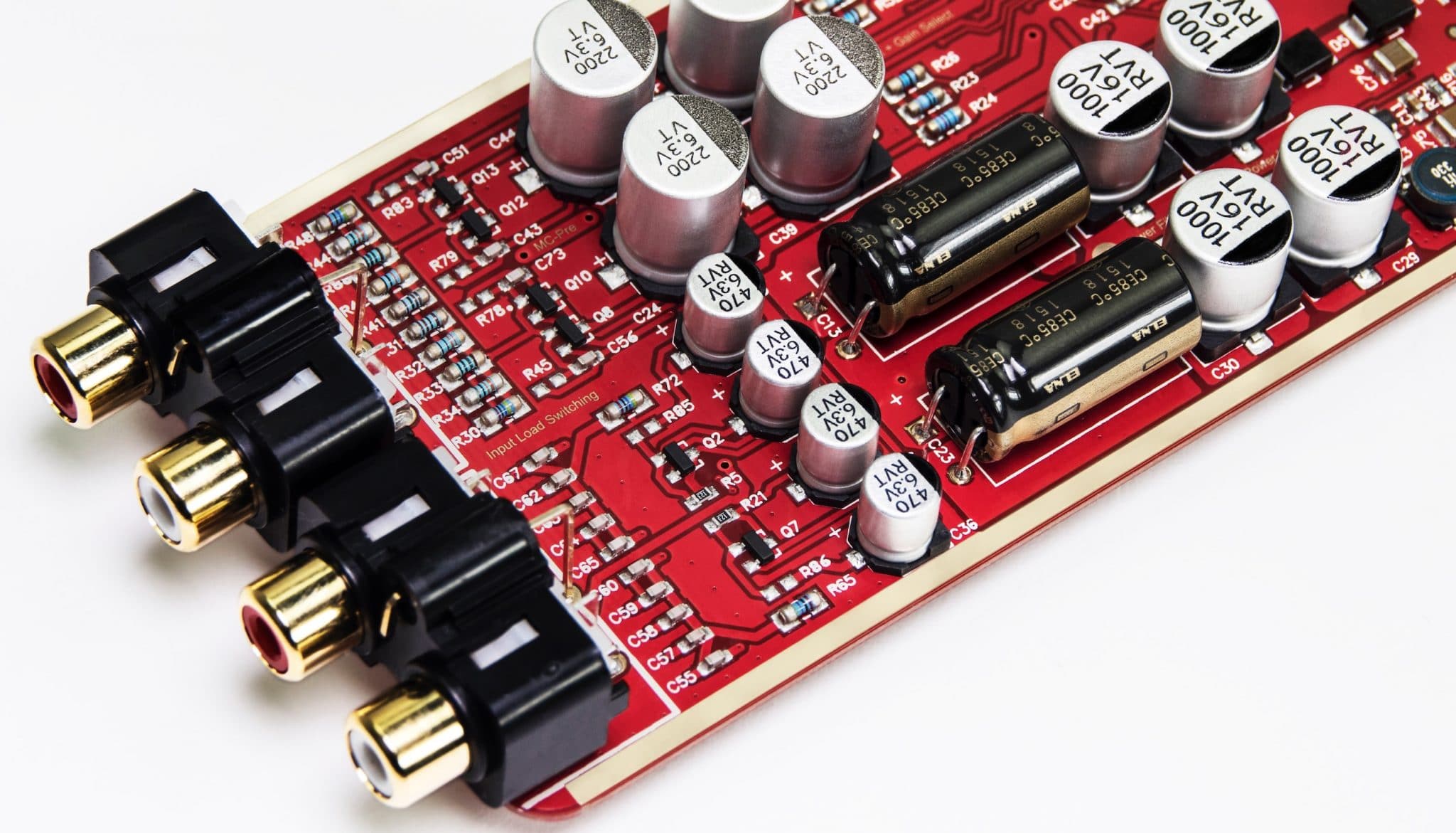
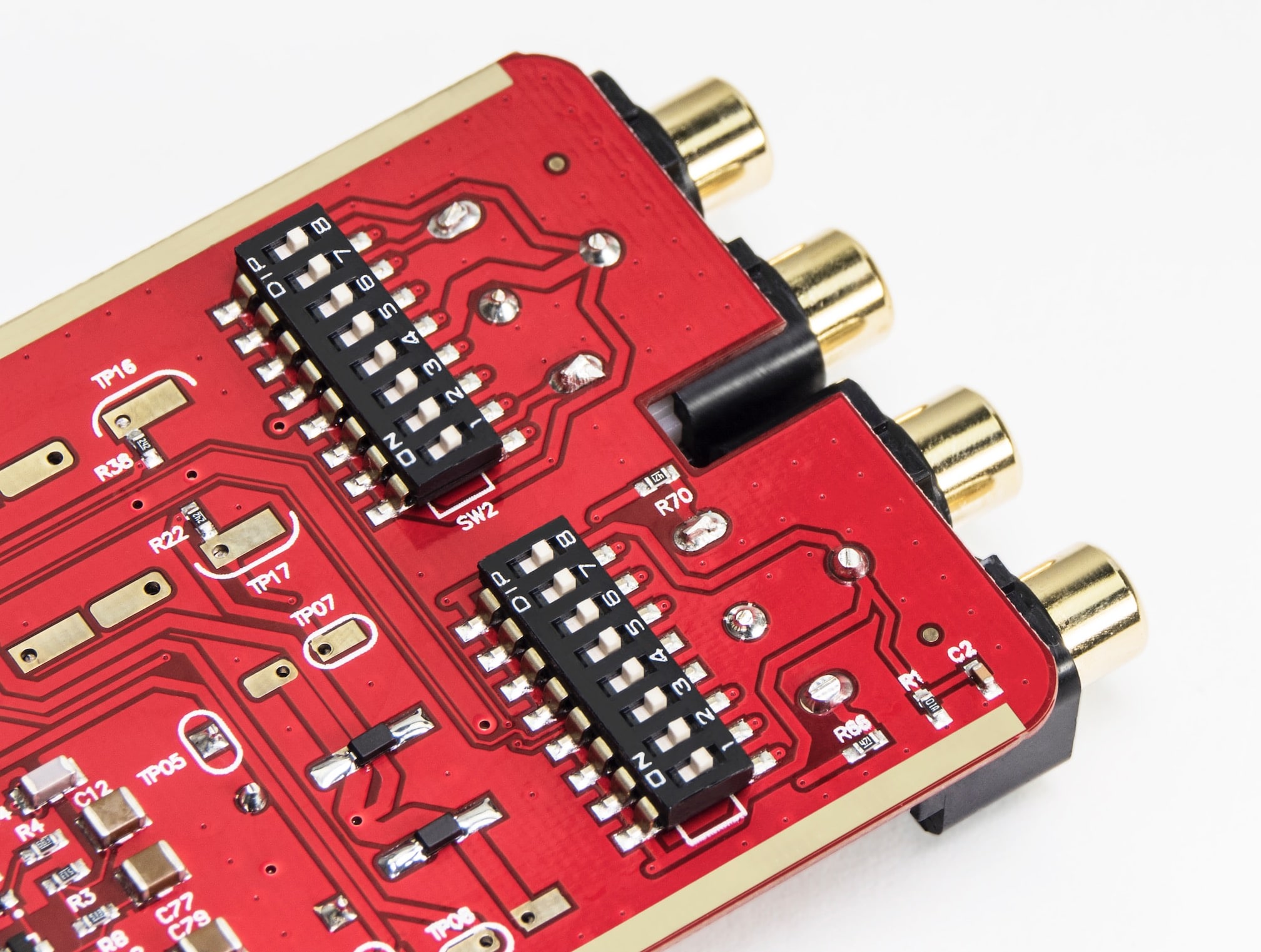
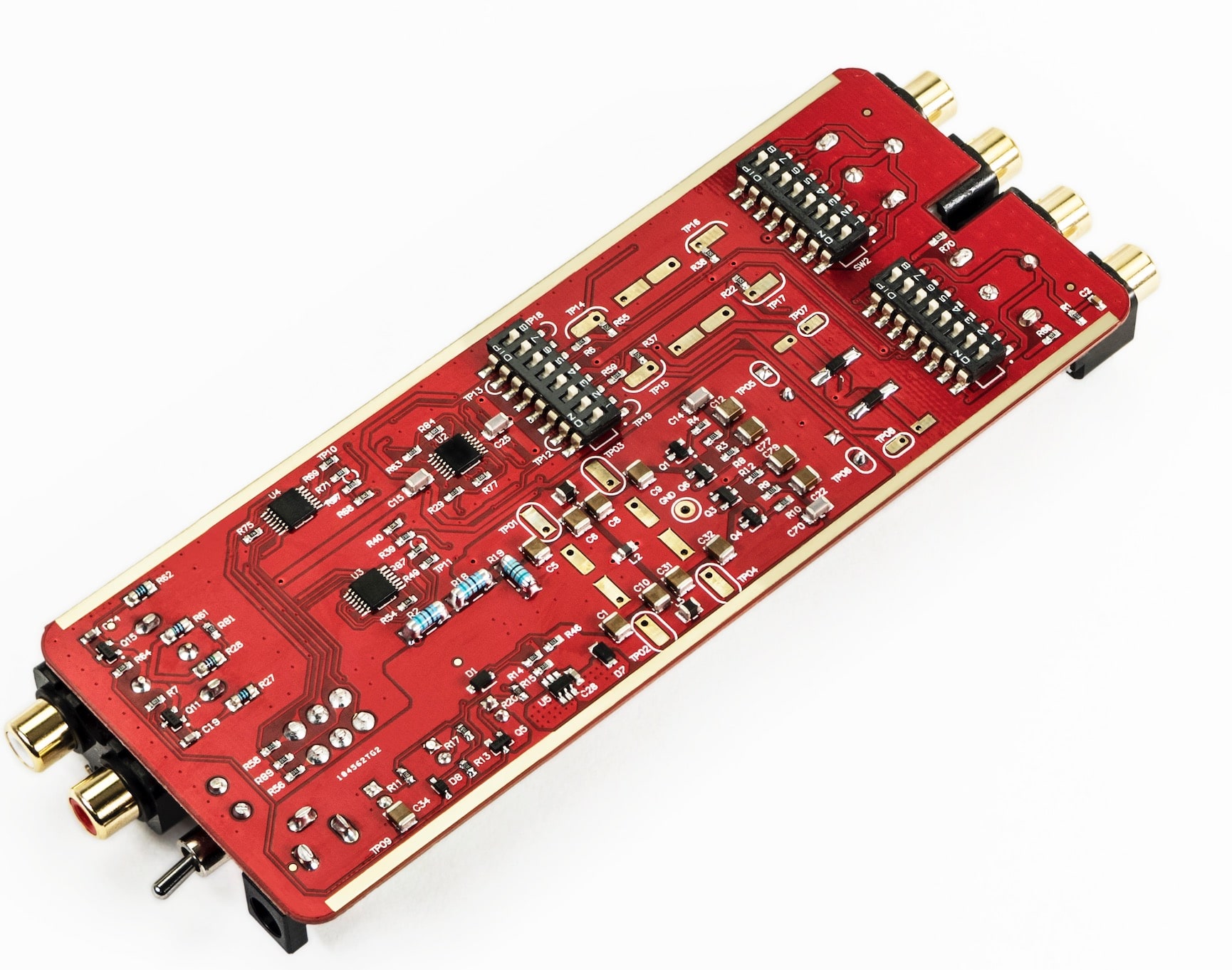
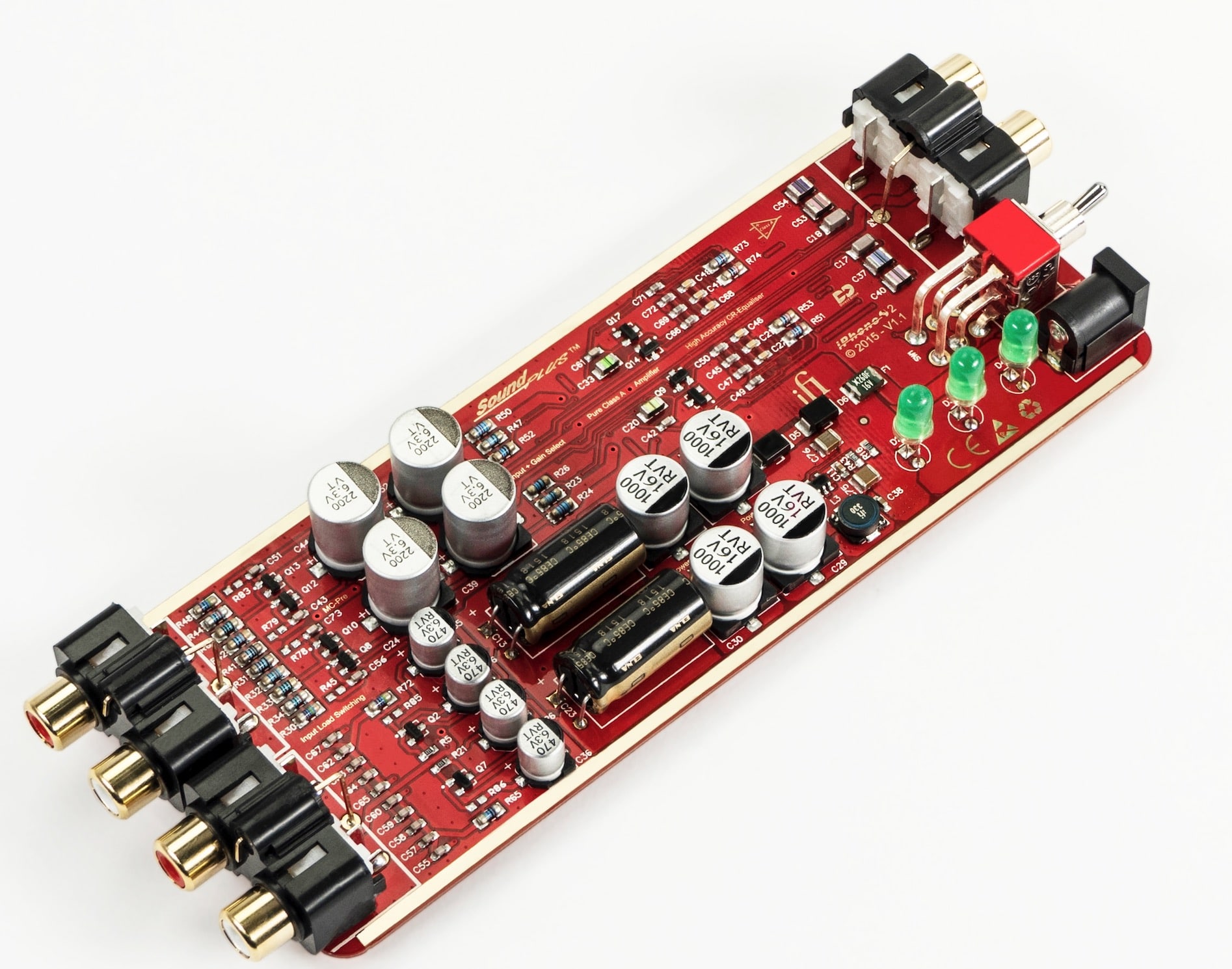
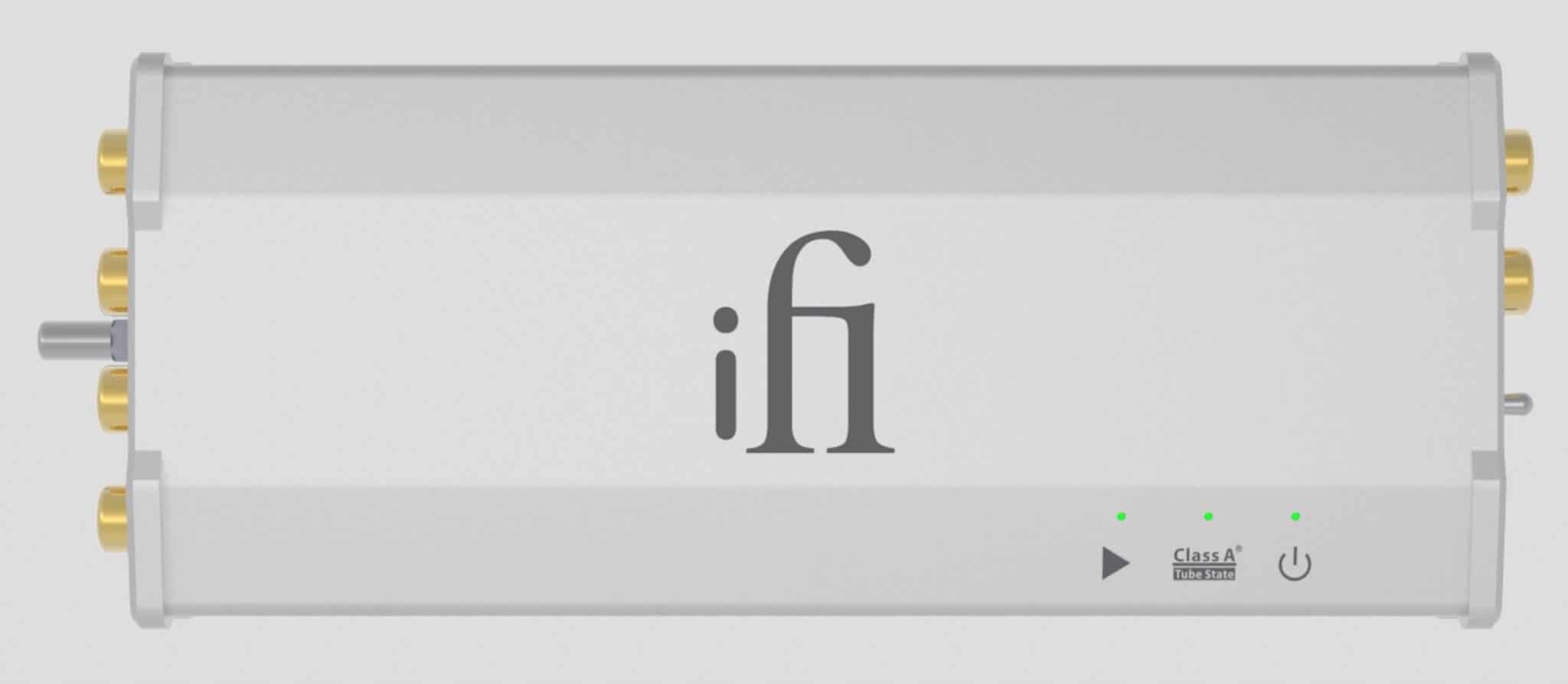
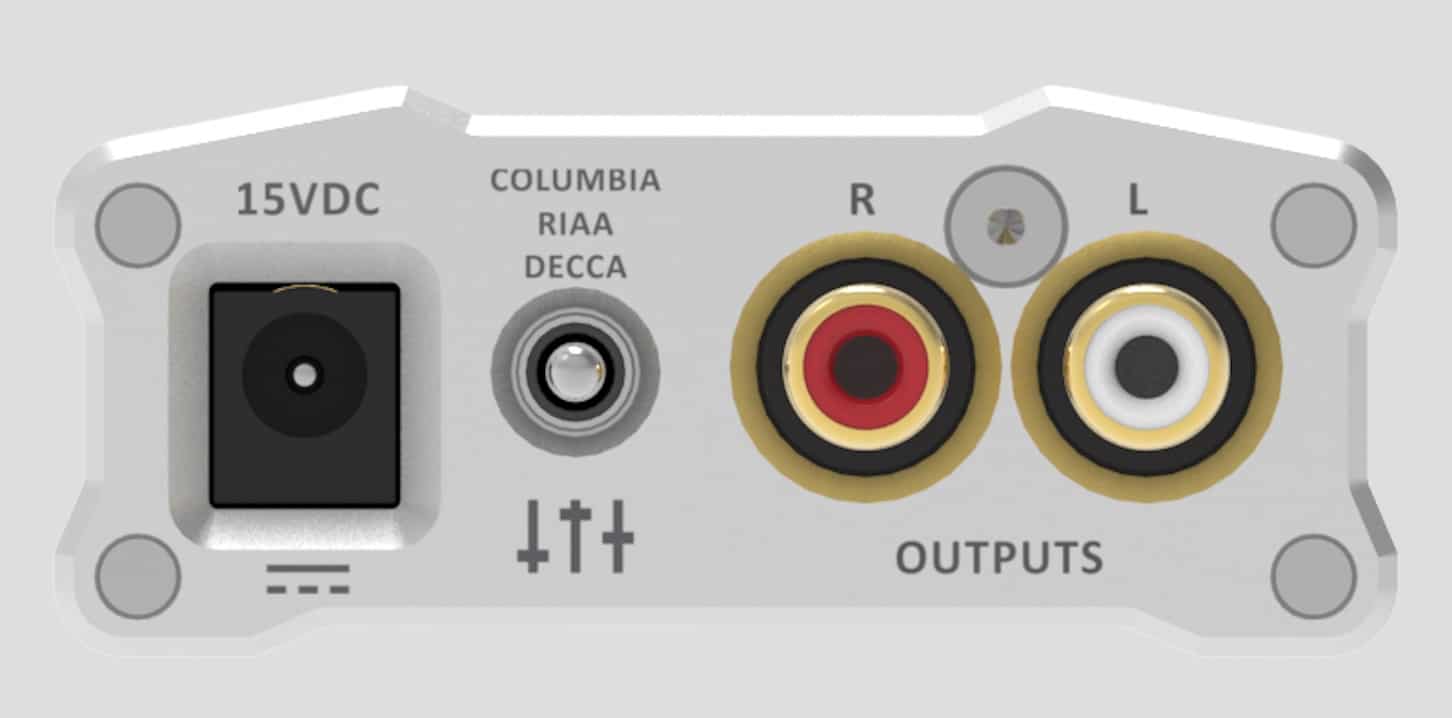
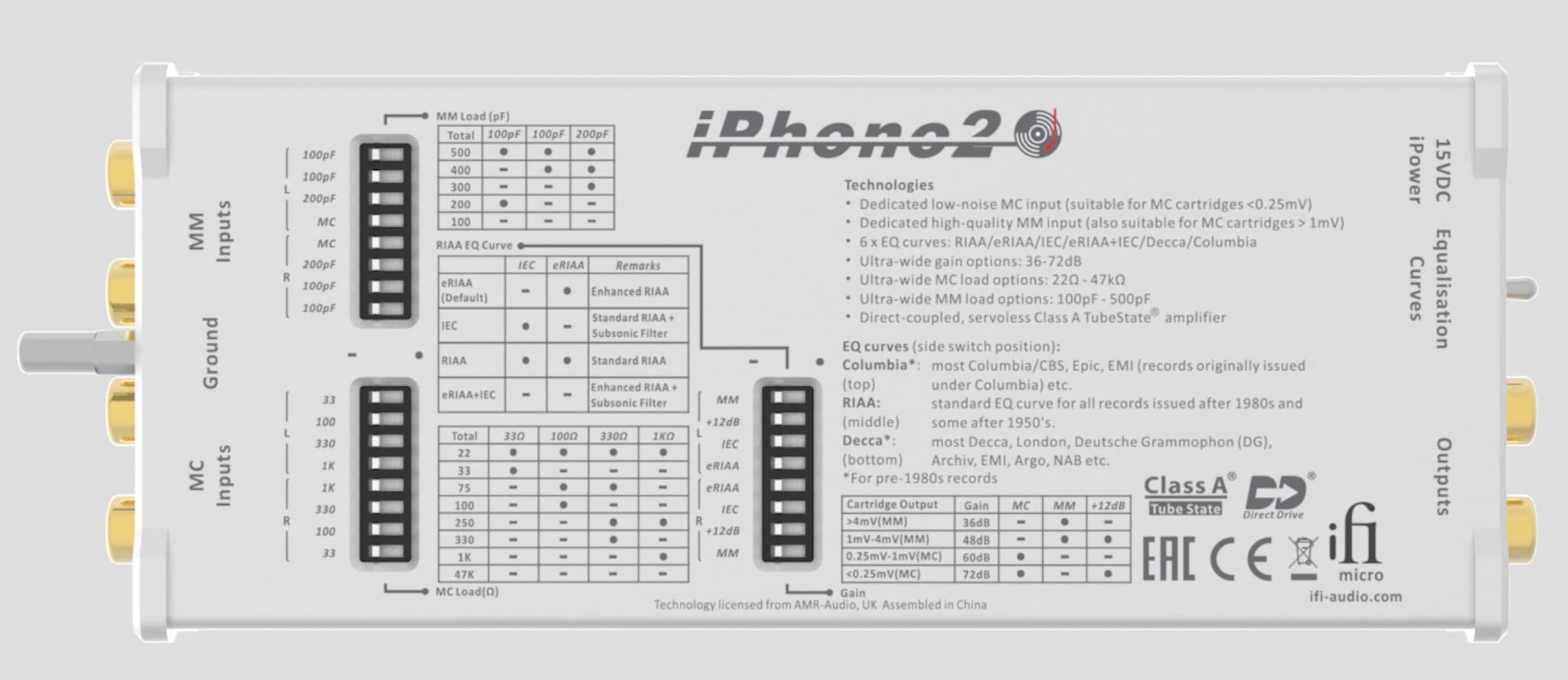




Terrific review as always Paul. The section below should be mandatory reading for those who don’t understand. Devastatingly simple but so difficult to achieve and let alone explain. In fact that was exactly my own experience when I upgraded to Titan power cords/mains block. So now I can fully understand what’s happening in my own system but this time with a huge grin on my wrinkly jowls üòä Thanks Paul!
“Picture a pretty garden bedecked with beautiful flowers and plants of all types, colour abounds, complex shapes and complimentary varieties collide to produce a glorious array. And there, in the centre, is a massive mushroom cloud reaching up into the air over 500ft and billowing aggressively. Faced with this picture, what are you going to focus on? That‚Äôs right, the cloud gets the attention. It dominates and challenges the eyes. For a typical phono amp in this price point, this particular test track provides the same ugly contrast but, this time, the ears are challenged. In this case the cloud was Lee‚Äôs own voice because it bloomed from the centre of the track and swamped all other detail. Lee‚Äôs vocal smeared over the soundstage, stopping secondary percussion, such as bells, as well as delicate wind instruments such as flutes from performing and delivering the information contained within. What‚Äôs more, the voice also added a clinical edge, giving a slight ringing to the midrange. The Micro iPhono 2 effectively stopped this vocal hernia by pushing it back into the mix, from whence it came. Once Lee‚Äôs delivery was settled into the mix once more, every instrument surrounding her relaxed, the soundstage became immediately more focused. Subtle detail such as those bells, flute and a very shy acoustic guitar strum could be heard properly for the first time via the iFi.”
Thanks for your kind words Dermot.
The RIAA EQ curve became the US industry standard in 1954, although some companies still used their own curves until the advent of stereo in 1958. Europe finally followed in 1962. Your 1963 Tony Bennett LP is RIAA, which has a 500 Hz bass rolloff with a 50 Hz “shelf” and 13.7 dB treble boost at 10 KHz. The early curves deviate from RIAA in the bass rolloff frequency (350 Hz for DG, 400 Hz for British Decca, 800 Hz for RCA and many other 45 rpm) and the treble boost ( 16 dB at 10 KHz for US Columbia, 10.5 dB for British Decca and DG). For a complete list of 78 and early LP curves, see the Wiki/Audacity page: https://wiki.audacityteam.org/wiki/78rpm_playback_curves
Thanks for that Martin, nice of you to follow up with some facts and figures.
I remain unconvinced by iFi’s EQ ‘feature’ and so did not take it too seriously. As I was reviewing the iFi hardware, I followed iFi’s guidance and iFi’s perception of what these EQ curves are. I thus set my variables as a potential customer would, following the instructions and based my conclusions on that.
One fly in the ointment, though, and something to consider, iFi also added that although RIAA adoption was immediate, implementation was slower than first thought and so many discs were not actually pressed with the RIAA curve when they really should have been. This is a valid argument and would parallel my own independent research in mono pressings compared to stereo. That sector of the industry followed a similar fractured development as the RIAA apparently has.
Je possède un iphone2 qui fait un bruit en sortie sur tous les reglages.
A l’oscillo. je visualise une r√©siduelle de fr√©quence secteur (60 Hz) superpos√©e d’oscillation d’environ 3 √† 4000 Hz
Je n’arrive pas √† sortir la carte de son boitier bloqu√©e par les switch qui bloquent sur les arr√™tes des fen√™tres.
Pourriez vous m’indiquer comment extraire cette carte ?
Merci.
Hi Alain – my meagre language abilities meant I had to resort to Google Translate but, even there, your question was a little tough to decipher. Could you possible re-address the question in English please?
Belatedly catching this review Paul whike hunting down sub 1000 quid phono stage, MM but perhaps MC also to futute proof. Difficult choice given proliferation of market choice. What ootions should we be looking at?
What’s your budget please Barry? You say sub 1000 but how high can you go on this one?
How do you compare the Iphono 2 with the Gold Note PH10 in terms of sound quality?
Both are excellent Jonathan but I think the Gold Note has the edge. The latter also has an excellent power supply upgrade to further enhance sonics.